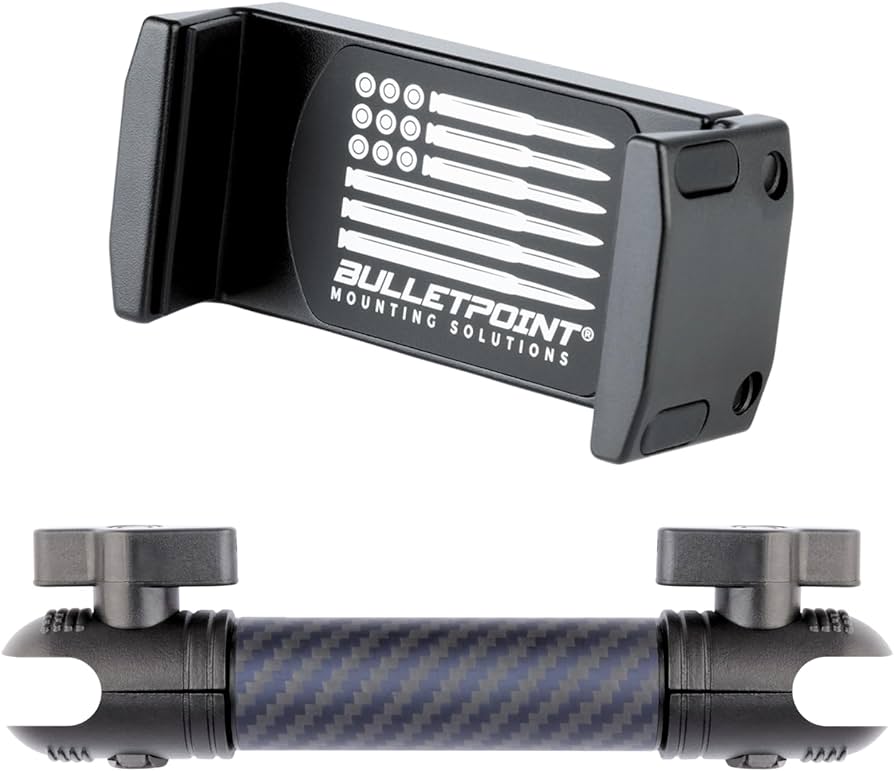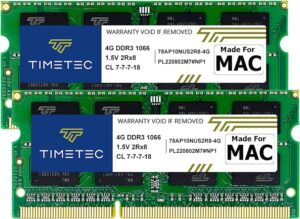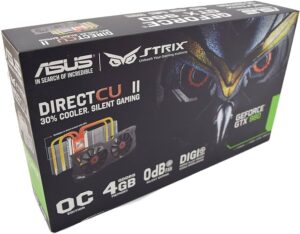Yes, RAM sticks are not universal and compatibility depends on the motherboard. When choosing RAM, it’s important to consider the specific type and speed required by your motherboard to ensure compatibility and optimal performance.
Random Access Memory (RAM) is an essential component of a computer, and selecting the right type is crucial for performance. While many people often wonder if RAM sticks are universal, the reality is that their compatibility varies depending on the motherboard.
We will delve into this topic to provide a comprehensive understanding of RAM compatibility and factors to consider when choosing RAM for your system. Understanding the nuances of RAM compatibility can help you make the right choice and optimize the performance of your computer system.
Different Types Of Ram
RAM sticks come in different types, such as DDR3, DDR4, and DDR5. However, it is important to note that not all RAM sticks are universal. Compatibility depends on factors like motherboard compatibility and the type of RAM slot supported.
Different Types of RAM RAM, or Random Access Memory, is an integral component of a computer that enables it to run multiple programs simultaneously. It is essential to understand the different types of RAM available, as they vary in their specifications and compatibility with different systems. The three main categories of RAM are DDR2, DDR3, and DDR4, each with distinct features and functionalities.Ddr2
DDR2, which stands for Double Data Rate 2, was an evolution from its predecessor, DDR. It offers improved data transfer rates and operates at higher clock speeds, enhancing overall system performance. DDR2 modules have 240 pins and are not compatible with other DDR versions due to differences in voltage and physical design.Ddr3
DDR3 RAM, the successor to DDR2, further increased data transfer rates and reduced power consumption. It operates at even higher clock speeds than DDR2 and features 240 pins. DDR3 modules are not interchangeable with DDR2 modules due to variations in voltage and physical configuration.Ddr4
The latest iteration of DDR RAM, DDR4, was designed to address the increasing demands of modern computing. It offers significantly higher data transfer rates and operates at lower voltage, resulting in improved energy efficiency. DDR4 modules feature 288 pins, and they are not compatible with DDR2 or DDR3 slots due to differences in pin configuration and voltage requirements. Understanding the differences among DDR2, DDR3, and DDR4 RAM is critical for selecting the appropriate memory modules for your system. Each type has its unique characteristics and compatibility requirements, and choosing the right RAM is essential for optimizing your computer’s performance. By familiarizing yourself with the distinct attributes of each type of RAM, you can make informed decisions when upgrading or building a computer, ensuring compatibility and optimal performance.
Credit: blog.jamesallen.com
Factors Affecting Ram Compatibility
When it comes to upgrading or replacing RAM in your computer, it’s essential to ensure compatibility with your system. Several factors can affect RAM compatibility, including physical dimensions, memory frequency, and voltage requirements.
Physical Dimensions
The physical dimensions of RAM sticks play a crucial role in compatibility. Different form factors, such as DDR, DDR2, DDR3, and DDR4, have varying dimensions and notches that dictate which motherboards they are compatible with.
Memory Frequency
The memory frequency, measured in MHz, determines the maximum speed at which the RAM operates. It’s crucial to match the memory frequency of the new RAM stick with the existing modules to avoid potential compatibility issues.
Voltage Requirements
Matching the voltage requirements is crucial for proper function and stability of the RAM. Some systems may have specific voltage requirements, so it’s important to ensure that the new RAM stick’s voltage is compatible with the motherboard’s specifications.
Common Compatibility Issues
In the world of computers, compatibility is crucial, especially when it comes to RAM sticks. While it would be great if all RAM sticks were universal, unfortunately, that’s not the case. In this article, we’ll explore some common compatibility issues to be aware of when dealing with RAM sticks.
Mixing Ram Types
One common compatibility issue arises when users attempt to mix different types of RAM sticks in the same system. For example, if you have DDR3 RAM installed in your computer and you want to add DDR4 RAM to the mix, you may run into compatibility problems. Mixing RAM types can cause instability, crashes, and even system failures.
In some cases, your computer may not even boot up if you try to mix incompatible RAM types. Therefore, it’s crucial to check the specifications of your motherboard and ensure that all RAM sticks you plan to use are of the same type.
Incompatible Motherboard
Another compatibility issue to be aware of is an incompatible motherboard. While most motherboards can accommodate a wide range of RAM types, there are instances where certain models only support specific types or limited capacities. This means that even if the RAM sticks themselves are compatible, they may not function properly with your motherboard.
It’s important to consult your motherboard’s documentation or the manufacturer’s website to determine the supported RAM types and capacities. This way, you can avoid wasting your money on RAM sticks that won’t work with your system.
Operating System Compatibility
The final compatibility issue to consider is the compatibility between your RAM and your operating system. While RAM sticks are generally designed to be compatible with various operating systems, there can still be issues if you’re running an older or less common OS.
In such cases, it’s important to check the recommended system requirements of your operating system and ensure that your RAM meets those specifications. For example, if you’re running a 64-bit operating system, it’s recommended to have at least 4GB of RAM. Failing to meet these requirements may result in poor performance or even system crashes.
In conclusion, when dealing with RAM sticks, it’s essential to be aware of common compatibility issues that can arise. Mixing RAM types, using an incompatible motherboard, or not meeting the operating system’s requirements can lead to a host of problems. By doing your research and ensuring compatibility before making any upgrades or purchases, you can avoid these headaches and build a stable, high-performance system.- “Mixing Different RAM Speeds: Can It Be Done?” – pcgamehaven.com
- “How to Check RAM Compatibility” – makeuseof.com
- “Understanding RAM Compatibility and Capacity Issues” – crucial.com

Credit: www.facebook.com
Ensuring Ram Compatibility
RAM sticks are not universal and compatibility is important. Ensure the RAM you choose matches the specifications of your motherboard to avoid any compatibility issues.
When it comes to upgrading or replacing RAM in your computer, the first question that often arises is, “Are RAM sticks universal?” Well, the answer is not a simple yes or no. While RAM sticks may appear identical, there are certain factors to consider to ensure compatibility. In this article, we will explore two essential ways to ensure RAM compatibility: using RAM compatibility tools and consulting the manufacturer’s specifications.
Using Ram Compatibility Tools
Thanks to advancements in technology, we now have user-friendly RAM compatibility tools readily available online. These tools provide a hassle-free way to determine whether a particular RAM stick is compatible with your computer or motherboard. All you need to do is input the relevant details of your system, such as the motherboard model and type, and the tool will generate a list of compatible RAM options.
Using a RAM compatibility tool takes the guesswork out of finding the right RAM for your system. It saves you time and effort, ensuring that you make the right choice without the risk of purchasing incompatible RAM. With just a few clicks, you can ensure a smooth and hassle-free RAM upgrade experience.
Consulting Manufacturer’s Specifications
Another foolproof way to ensure RAM compatibility is by consulting the manufacturer’s specifications. Each computer and motherboard model comes with its own set of specifications, including the supported RAM type, speed, and capacity. By referring to the manufacturer’s documentation or website, you can easily find the specific RAM requirements for your system.
| Manufacturer | Model | Supported RAM Type | Supported RAM Speed | Maximum RAM Capacity |
|---|---|---|---|---|
| Dell | Inspiron 15 | DDR4 | 2400MHz | 16GB |
| ASUS | ROG Strix B450-F Gaming | DDR4 | 3200MHz | 64GB |
| HP | Pavilion 27 | DDR3 | 1600MHz | 32GB |
As you can see in the table above, different manufacturers and models have varying RAM requirements. It is crucial to match these specifications to ensure optimal performance and compatibility. By following the manufacturer’s guidelines, you can confidently purchase the right RAM stick for your system without any compatibility issues.
In conclusion, while RAM sticks may look similar, they are not universal. To ensure compatibility, use RAM compatibility tools to find the right RAM options for your system. Additionally, consult the manufacturer’s specifications to determine the supported RAM type, speed, and capacity. By following these steps, you can confidently upgrade or replace your RAM and enjoy a seamless computing experience.

Credit: www.amazon.com
Frequently Asked Questions Of Are Ram Sticks Universal
Are All Ram Sticks Universal?
No, RAM sticks are not universal. They come in different form factors, such as DDR3, DDR4, and DDR5. Each form factor has different specifications, including pin count and voltage requirements. It’s important to check compatibility with your motherboard before purchasing RAM.
Can I Mix Different Brands Of Ram?
Mixing different brands of RAM is possible, but not always recommended. It’s best to use RAM that has the same specifications, such as speed, voltage, and timings. Mixing different brands may result in compatibility issues and can cause system instability.
How Do I Know If Ram Is Compatible With My Computer?
To know if RAM is compatible with your computer, you need to check your motherboard’s specifications. It should indicate the type of RAM (DDR3, DDR4, etc. ), the maximum amount of RAM it supports, and the maximum speed. You can also refer to your computer’s user manual or consult with a computer technician.
What Happens If I Use Incompatible Ram?
Using incompatible RAM can lead to various issues, such as system crashes, freezes, and performance degradation. Your computer may not boot up or may display error messages. It’s best to ensure that your RAM is compatible with your system to avoid these problems.
Conclusion
It is clear that while there are some universal aspects to RAM sticks, not all RAM sticks are created equal. It is important to consider the specific requirements of your computer and ensure compatibility before making a purchase. Whether you are a professional or a casual user, understanding the compatibility of RAM sticks can improve the performance and longevity of your system.
So, before upgrading or replacing your RAM, do your research to find the right fit for your needs. Keep in mind that seeking professional advice can also help you make an informed decision.



